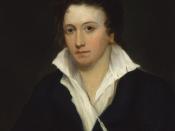In the eighteenth century period of art history, divergences between the classical concepts of art and the new empirical view of sensibility divided the European art world. The classical theorists were bound to the Aristotelian view of art as means to bring about morality through its participants. The principle of sensibility, founded from the non-artist world, questioned the subjectivity vs. objectivity distinction in morality and beauty. Two writers on this discussion, Percy Bysshe Shelley and Freidrich Schiller, marked their views on poetry and theater to further explain the motivations and impacts that art made on this revolutionary period of time.
In an article titled Classical Theory and Eighteenth-Century Sensibility, Rudolph Wittkower explains the fundamental assumptions of the classical theorist. These can be summed up in four ideas; art is a science, art portrays an objective beauty, art must involve human action, and that the purpose is not only to entertain, but to convey a moral teaching (Wittkower, 193).
The first assumption, that art is a science, regards the classical strive toward the best representation of nature. However, the best representation of nature does not allow for explanation of what is most beautiful. The second assumption that art should include human action, develops a ranking of the genres of art in paintings and sculpture; those involving human actions at its highest rank, while animal stills and inanimate landscapes take their place in the lower orders. The implications of the former statement limit the options of the classical artist as far as what the subject and theme of a painting should include.
The continuation of exclusive allegorical artistry was halted by the eighteenth century enlightenment. Representations in works of art often left unclear messages as to what in each work was representing another thing, and how that thing relates to the subject.


